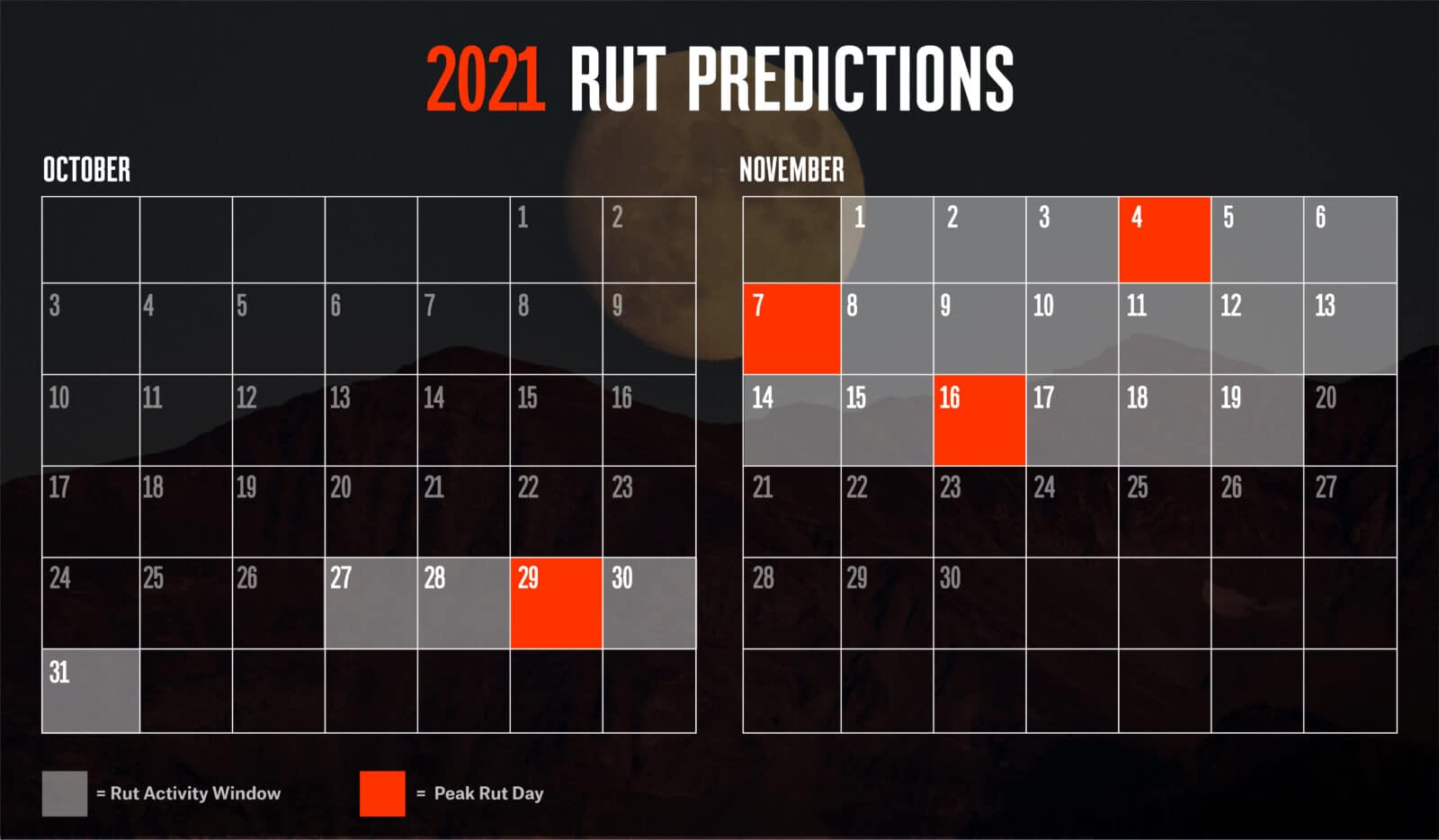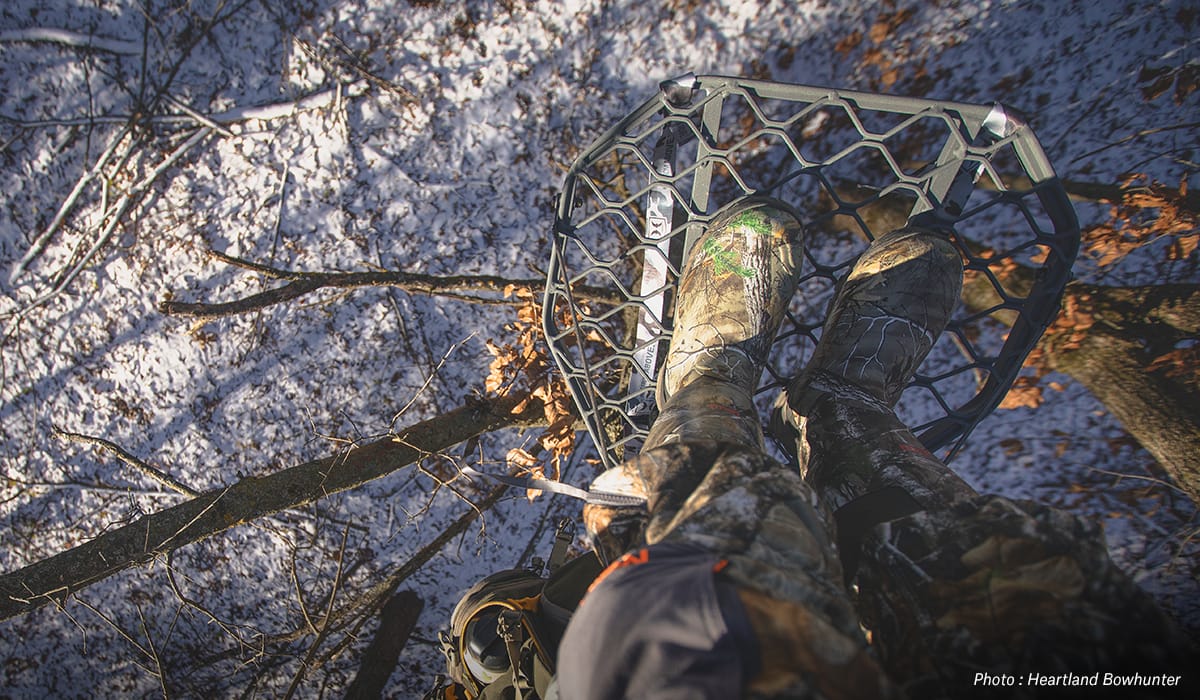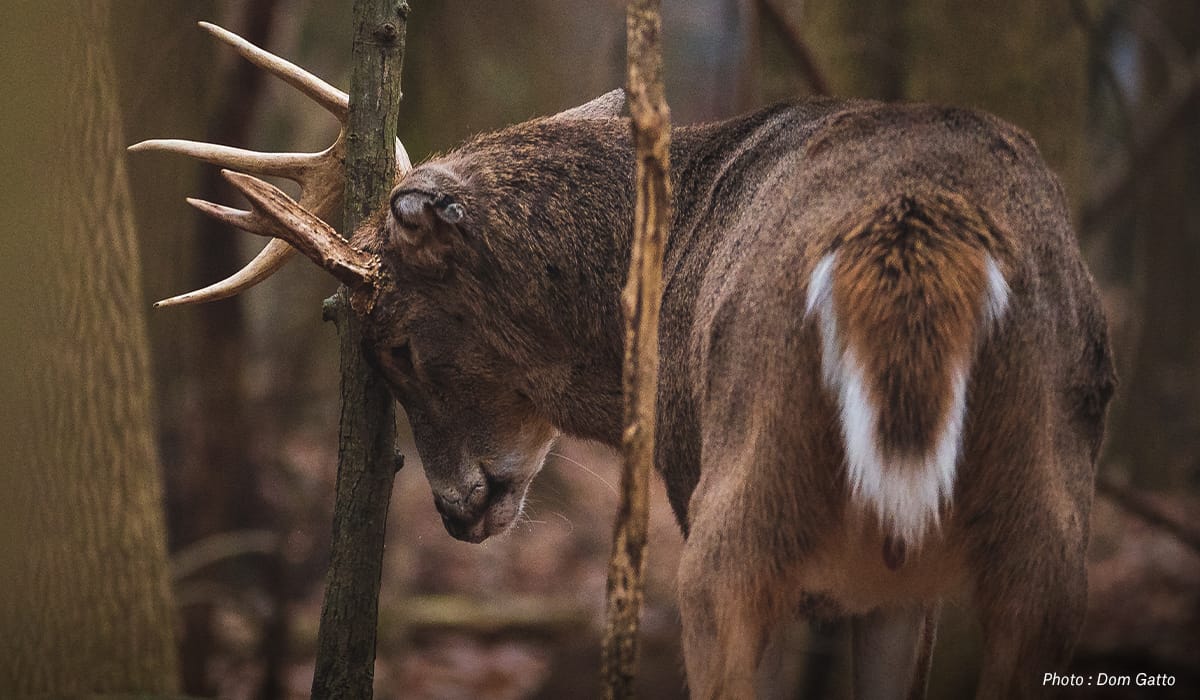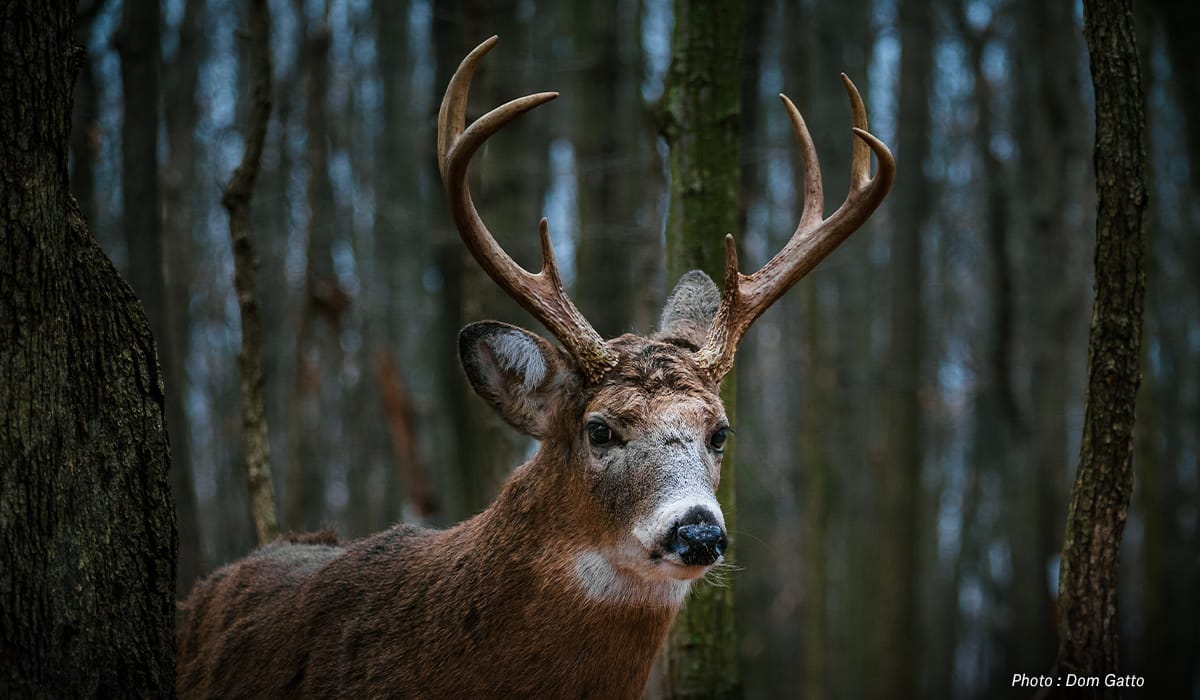Know the best days for tagging a mature buck with these insights for hunting the rut.
Looking for this season’s deer rut predictions?
See our 2025 rut predictions. And, for all things deer rut, from biological insights to current and past rut reports, dig into our full deer rut collection.
Flip through the early pages of the National Deer Association’s 2021 Deer Report and you’ll see the positive news that hunters are finding success tagging whitetails. In the introduction, Kip Adams writes, “the antlered buck (those 1½ years or older) harvest is at a near-record level, and last season’s buck harvest was 4% above the previous five-year average.”
Finding Mature Bucks in 2021
As far as deer biology goes, does will come into estrus nearly the exact same time each year, but that doesn’t bring all bucks to attention on a single day. Mature bucks will start laying sign (rubs, scrapes, etc), marking territory, and moving around more as the first does come into estrus, but since bucks, on average, only breed three or four does a season the rut will take place in multiple phases, and in over multiple months if some does aren’t bred in the first rut. Finding rutting bucks in 2021 will be about paying attention to the phases of each rut.
It’s also important to understand that hunting the rut and these rut predictions will be dependent on factors beyond anyone’s control. Factors such as weather, moon phase, drastic landscape changes, and increased or decreased hunter pressure will affect when and where deer are moving. However, we can still target times conducive to seeing big bucks on the move based on the same science we’ve used in years past.
Rut Phases
Drury Outdoors’ DeerCast breaks down the rut into six unique phases. Having a working knowledge of how deer behave differently in each of these phases helps hunters hunt better. The middle six phases (containing the rut) of the 13 phases outlined in DeerCast are:
- Phase Four: Pre-Lock
- Phase Five: High Anticipation
- Phase Six: Buck Parade
- Phase Seven: Lock Down
- Phase Eight: Desperately Seeking
- Phase Nine: Party’s Over
There are a few noteworthy particulars in 2021 that should be on every hunter’s radar. Unlike last year where there were two full moons in the month of October, on the first and 31st, we’ll see full moons on October 20 and November 19.
Interestingly, 2021 also brings us a super new moon on November 4. A super moon (full or new) is when the moon is at its closest to Earth in its elliptic orbit. We’ll talk more about this new moon below.

Best Days for Hunting Deer in 2021
As we noted in last year’s rut predictions, multiple scientific studies have found that 90 percent of adult whitetail does in North America will be in estrus and breed between November 5 to 20.
We researched dates for 2021 and again asked our Ambassadors what days they’ll be out hunting, and these are the dates that have many’s attention.
October 29 (+/- 2 days)
What might be early in the rut for many parts of the country could also be a great target date to be in a tree stand or blind. According to DeerCast, some hunters might be experiencing Phase 4 “Pre-Lock.”
Pre-Lock is a great time to start calling, using your grunt tube or rattling antlers to try to make something happen in the whitetail woods. Often the oldest, most mature bucks can be found in daylight hours during this time of year as they are seeking that very first doe in estrus. This is the time of year you can start to get aggressive.
“I love the last week of October and the middle of the rut. Honestly, the best days to hunt, in my opinion, are as much as possible between October 25 and Thanksgiving. It’s hard for me to pick an exact date range in there, but if I only had a few days and nothing else I’d probably pick the last five days of October or November 10-15.” – The Hunting Public’s Aaron Warbritton

November 4 (+/- 1 day)
All signs point favorably to an early morning hunt coinciding with the super new moon on November 4. Why? The NDA (formerly QDMA) has noted that the new moon’s peak deer activity is at first light and lessens throughout the day and evening. With the new moon falling right in line with the rut window, this specific day offers a good shot at a buck.
Now before you map out an entire hunting season related to a solunar cycle, it’s worth watching this four-minute video from the NDA that discusses deer movement in relation to moon phases:
Up to November 7
With repetition comes experience. With experience comes success. Ask nearly every hunter you know if he or she has a thing they do before or during every hunt, and some might admit to wearing a “lucky hat,” or eating a particular breakfast, or repeating a particular prayer or mantra. Others might confess to hunting the same day every year because it has shown consistent success. No matter if it’s because of superstition or repetition, November 7 could be a lucky roll of the dice for locking on a big deer.
“Easily my favorite time to hunt whitetail during the rut is that first week of November. Statistically, November 7 has been one of the best days of the year for me, having harvested several mature bucks over the years on that date. During the time, bucks are typically cruising hard, seeking those first few does that have come into heat and throwing caution to the wind as their rut-crazed minds wander the woods!” – Heartland Bowhunter’s Michael Hunsucker

November 16 (+/- 3 days)
We pointed at mid-November last year too, but it deserves another mention in 2021 because of two big reasons. First, this middle part of November leads up to the full moon occurring on November 19. As we’ve heard from Matt Drury last year, you’ll want to spend some afternoons in the stand pre-full-moon:
“Those five days leading into the full moon, the afternoons tend to be better, as that moon is rising and deer are getting up earlier to head to a food source.” – Drury Outdoors’ Matt Drury
Secondly, mid-November includes the true rut “lockdown,” when bucks have found willing does in estrus to breed. If you’re seeing does around these days chances are very high you’ll see a buck not far behind. Statistically, November 13 has been found to be the most common day does are bred around most parts of the country.
If you can be in the stand on or around November 16 you’re splitting the difference between the month’s full moon and the most active rut day in the U.S., so the odds should forever be in your favor to bag a buck. See our deer shot placement chart for the perfect angles from the ground and a stand.

On the Hunt for Core Bucks
Core bucks are mature bucks that live on or in close proximity to your land. You hear this term from hunters who hunt the same one or two properties each season. These are the bucks showing up on trail cameras or visiting feeders and watering holes. Core bucks are the ones that will be most active at the beginning of the rut, so if you’re on to a core buck already this year, watch them closely as the signal to the start of the rut.
If you see core bucks laying sign or moving around more frequently, covering greater distances, you’ll know that does are coming into estrus. From here you can pace out the 13 phases of the rut and dial in your hunting strategy for each of the phases.
Non-core bucks are the ones traveling greater distances to get to your land. They’re the ones showing up infrequently on your trail cameras or get photographed at odd times in the night. Non-core bucks are ones you’ll see more frequently during the peak rut periods.